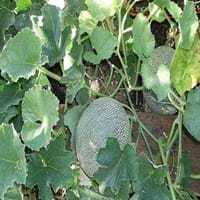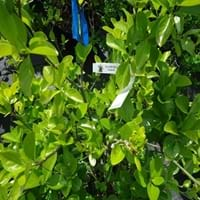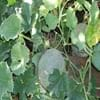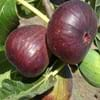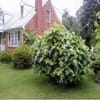Life Span
Annual
Perennial
Origin
Hybrid origin, Africa
Europe, Western Asia
Types
Cantaloupe, Hami Melon, Galia Melon
Not Available
Habitat
Cultivated Beds
Floodplains, Open Forest
USDA Hardiness Zone
9-11
4-7
Sunset Zone
2a, 2b, 3a, 3b, 4, 5, 6, 7, 8, 9, 10, 11, 12, 13, 14, 15, 16, 17, 18, 19, 20, 21, 22, 23, 24
1a, 1b, 2a, 2b, 3a, 3b, 4, 5, 6, 7, 8, 9, 14, 15, 16
Habit
Vining/Climbing
Oval or Rounded
Flower Color
Yellow, Gold
Yellow green
Flower Color Modifier
Bicolor
Not Available
Fruit Color
Light Yellow, Tan
Orange
Leaf Color in Spring
Green, Light Green
Green
Leaf Color in Summer
Green, Light Green
Green
Leaf Color in Fall
Green, Light Green
Yellow, Red, Yellow green
Leaf Color in Winter
Light Green
Not Available
Leaf Shape
Heart-shaped
Ovate
Plant Season
Summer, Fall
Fall
Sunlight
Full Sun
Full Sun, Partial Sun, Partial shade
Growth Rate
Very Fast
Fast
Type of Soil
Loam
Clay, Loam, Sand
The pH of Soil
Neutral
Acidic, Neutral, Alkaline
Soil Drainage
Well drained
Well drained
Bloom Time
Indeterminate
Late Spring
Tolerances
Drought
Drought
Where to Plant?
Ground
Ground
How to Plant?
Seedlings
Seedlings, Transplanting
Plant Maintenance
Medium
Medium
Watering Requirements
Reduce watering once fruit are growing, Water in the early morning hours
Keep the ground moist but not water-logged, Requires a lot of watering, Requires regular watering, Requires watering in the growing season
In Summer
Lots of watering
Lots of watering
In Spring
Moderate
Moderate
In Winter
Average Water
Average Water
Soil pH
Neutral
Acidic, Neutral, Alkaline
Soil Type
Loam
Clay, Loam, Sand
Soil Drainage Capacity
Well drained
Well drained
Sun Exposure
Full Sun
Full Sun, Partial Sun, Partial shade
Pruning
Cut old vines, Remove damaged fruit
Prune in late winter, Prune in spring, Remove dead leaves, Remove shoots
Fertilizers
Apply N-P-K
All-Purpose Liquid Fertilizer
Pests and Diseases
Aphids, Cucumber beetles, Fusarium wilt
Red blotch
Plant Tolerance
Drought
Drought
Flowers
Showy
Insignificant
Flower Petal Number
Single
Single
Foliage Texture
Coarse
Medium
Foliage Sheen
Matte
Glossy
Allergy
Dizziness, Mouth itching, Nausea
Asthma
Aesthetic Uses
Not Used For Aesthetic Purpose
Beautification, Landscape Designing, Showy Purposes
Beauty Benefits
Good for skin, Hair Conditioner, Stops hair loss
Not Available
Environmental Uses
Air purification
Air purification
Medicinal Uses
Antitussive, Digestive, Diuretic, Emetic, Febrifuge, Stomachic
Not Available
Part of Plant Used
Fruits, Seeds
Fruits, Seeds
Other Uses
For making oil for cosmetics
Decoration Purposes, Showy Purposes, Used as Ornamental plant
Used As Indoor Plant
No
No
Used As Outdoor Plant
Yes
Yes
Garden Design
Edible, Fruit / Fruit Tree, Herb / Vegetable, Vine
Hedges, Screening, Wind Break
Botanical Name
CUCUMIS melo 'Super 45'
EUONYMUS europaeus
Common Name
Muskmelon
European spindle
In German
Muskmelon
gemeinsamen Spindel
In French
Cantaloup
axe commun
In Spanish
Melón
husillo Común
In Greek
Muskmelon
κοινή άξονα
In Portuguese
Melão
eixo comum
In Polish
Muskmelon
wspólna wrzeciona
In Latin
Muskmelon
commune fusum
Phylum
Magnoliophyta
Tracheobionta
Class
Magnoliopsida
Magnoliopsida
Order
Cucurbitales
Celastrales
Family
Cucurbitaceae
Celastraceae
Clade
Angiosperms, Eudicots, Rosids
Angiosperms, Eudicots, Rosids
Tribe
Melothrieae
Not Available
Subfamily
Cucurbitoideae
Not Applicable
Number of Species
Not Available
Not Available
Importance of Muskmelon and Common Spindle
Want to have the most appropriate plant for your garden? You might want to know the importance of Muskmelon and Common Spindle. Basically, these two plants vary in many aspects. Compare Muskmelon and Common Spindle as they differ in many characteristics such as their life, care, benefits, facts, etc. Every gardener must at least have the slightest clue about the plants he wants to plant in his garden. Compare their benefits, which differ in many ways like facts and uses. The medicinal use of Muskmelon is Antitussive, Digestive, Diuretic, Emetic, Febrifuge and Stomachic whereas of Common Spindle is Not Available. Muskmelon has beauty benefits as follows: Good for skin, Hair Conditioner and Stops hair loss while Common Spindle has beauty benefits as follows: Good for skin, Hair Conditioner and Stops hair loss.
Compare Facts of Muskmelon vs Common Spindle
How to choose the best garden plant for your garden depending upon its facts? Here garden plant comparison will help you to solve this query. Compare the facts of Muskmelon vs Common Spindle and know which one to choose. As garden plants have benefits and other uses, allergy is also a major drawback of plants for some people. Allergic reactions of Muskmelon are Dizziness, Mouth itching and Nausea whereas of Common Spindle have Asthma respectively. Having a fruit bearing plant in your garden can be a plus point of your garden. Muskmelon has showy fruits and Common Spindle has showy fruits. Also Muskmelon is not flowering and Common Spindle is not flowering . You can compare Muskmelon and Common Spindle facts and facts of other plants too.
